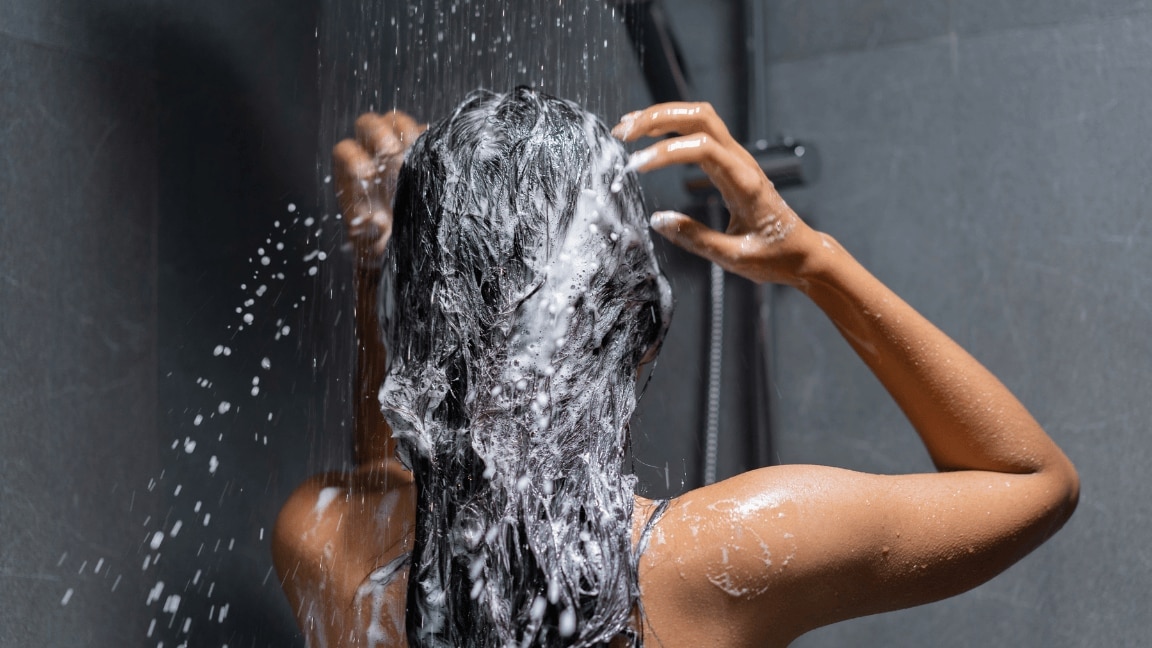Have you ever stood in the hair care aisle, overwhelmed by the seemingly endless range of shampoos and conditioners? We surely have. With claims ranging from 'volumising' to 'colour-safe' and 'hydrating,' it can be tough to know where to start. The truth is that the one-size-fits-all philosophy doesn't apply to your daily shampoo and conditioner—different types of hair demand varying hair-washing routines. The best products for you depend largely on your hair type and specific needs. In this article, we dive into the often confusing world of hair care, specifically focusing on the different shampoos, conditioners, and products suited to various hair types. From oily to dry, curly to straight, and everything in between, we'll explore the best products and techniques for each hair type, cutting through the clutter of social media trends and Instagram fads. With expert-backed advice, we uncover whether there's a science behind how often should you wash your hair—and how to tailor your routine for optimal hair health. Bookmark this guide for a head full of beautiful locks!
01Understanding Your Hair Type
The first step to washing your hair properly is identifying your hair type. This will help you select the right products and tailor your washing routine accordingly. Here's a quick breakdown:
- Oily: Hair that becomes greasy and shiny quickly, often due to excess sebum production.
- Dry: Hair that is brittle and fragile, lacks moisture and may be prone to breakage.
- Normal: Hair that is neither overly oily nor dry, with a balanced scalp.
- Curly: Hair that has natural waves, coils, or curls, and is prone to dryness and frizz.
- Straight: Hair that lies flat and straight against the scalp.
02Choosing the Right Products
Once you have identified your hair type, it's time to select the appropriate shampoo and conditioner. Here's a handy guide:
- Oily Hair: Opt for products labelled clarifying or balancing to help control excess oil. Don't use heavy or moisturising shampoos or conditioners.
- Dry Hair: Choose hydrating shampoos and conditioners containing ingredients such as shea butter, coconut oil, or aloe vera. The Dove Hair Therapy Breakage Repair Sulphate-Free Shampoo and Dove Hair Therapy Dry Scalp Care Moisturising Conditioner are perfect for dry hair.
- Normal Hair: A mild, moisturising shampoo and conditioner is ideal. The Love Beauty And Planet's Olive Oil & Peptide Range is an excellent shampoo for normal hair.
- Curly Hair: Shampoos and conditioners designed specifically for curly hair contain specific ingredients that help define curls and reduce frizz.
- Straight Hair: A gentle, lightweight shampoo and conditioner will work well for straight hair.
- Fine Hair: Those with fine hair should choose products that have a gentle formulation such as aloe, rose water, and chamomile
03Washing Techniques
Here are some easy-to-follow tips for washing your hair effectively:
- Temperature: While we all love a hot shower, it can strip your hair of moisture and proteins, and at worst damage your scalp. Always utilise lukewarm water to avoid stripping your hair of natural oils.
- Shampoo Twice: Wondering how to shampoo hair properly? Most people don't actually get their hair truly clean when they wash it, so it ends up covered in a film, which leads to dullness and lack of shine over time. By shampooing twice, you have a first wash to remove excess dirt and grime, and then a second wash to get it squeaky clean.
- Conditioner: Using a shampoo without the moisturising effects of conditioner might make your hair more prone to breakage. After shampooing twice, apply a conditioner to the ends of your hair and leave it on for a few minutes before rinsing.
04How Often Should You Wash Your Hair
Can you wash your hair every day? Though it might seem counterintuitive, the secret to clean and healthy hair is to avoid washing it every day. How often should you wash your hair? It depends on your hair type and personal preference. Most experts agree that washing your hair on alternating days, or two to three times a week is a great rule of thumb for the majority of hair types. Those with oily hair may need to wash more often, while those with dry hair can go longer between washes.
05Additional Tips
- Deep Condition: Treat your hair to a deep conditioning treatment once a week to add additional moisture and nourishment. Deep conditioners penetrate the hair shaft to nourish and hydrate, repairing damage and boosting overall hair health.
- Avoid Heat Styling: Try to air dry as much as possible as excessive heat styling can damage your hair. Aid the air-drying process by using leave-in treatments, such as a TRESemmé hair serum, or add natural oils to the ends of your hair.
- Shield From The Sun: Apply a leave-in conditioner with SPF to protect your hair from the sun's harmful rays.
- Regular Trims: Regular haircuts and trims help maintain healthy hair and prevent split ends. By understanding your hair type, selecting the right products, and following these simple hair-washing routines, you can achieve healthy, clean hair. With a little attention and effort, you will be well on your way to a head full of beautiful tresses.






